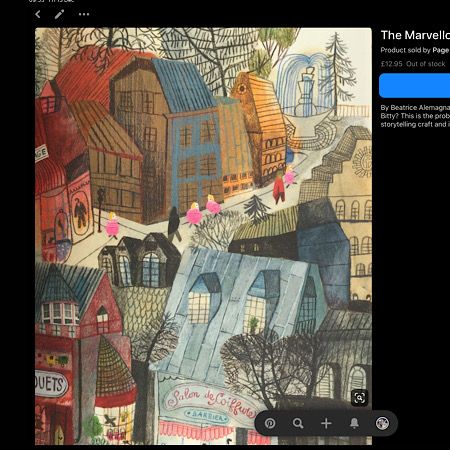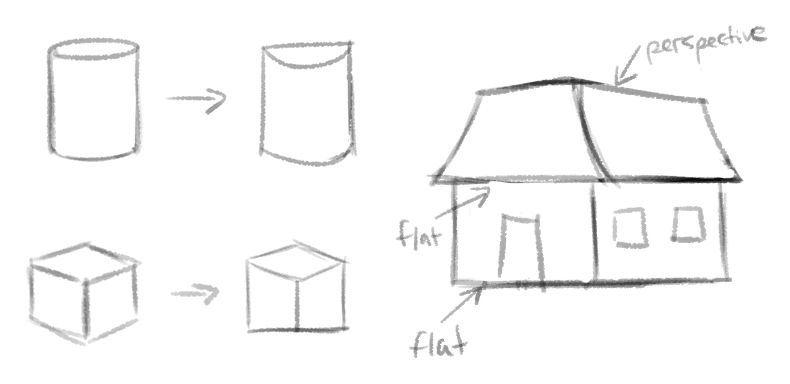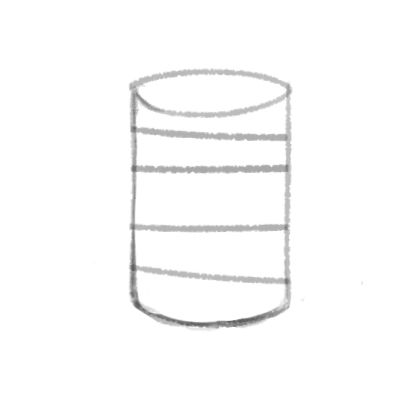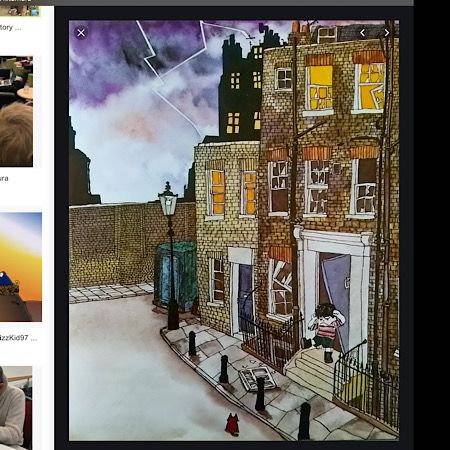Rules for ‘no rules’ perspective illustrations
-
@xin-li

Maybe no rules perspective doesn’t describe it well. Soft rules might be a better description or easy going perspective. -
-
@peteolczyk Beatrice's work somehow reminded me of Picaso and cubism in general.
I read it here
"Their (cubists) aim was to show things as they really are, not just to show what they look like. They felt that they could give the viewer a more accurate understanding of an object, landscape or person by showing it from different angles or viewpoints, so they used flat geometric shapes to represent the different sides and angles of the objects. By doing this, they could suggest three-dimensional qualities and structure without using techniques such as perspective and shading."This sounds facinating, but one question remains: how do we practice?
There are some activities suggested in the article linked. I might take a close look this evening. -
@peteolczyk not sure about this second image. To me the perspective is not so wonky :-).
-
@xin-li that’s interesting as well to hear your view of it. There’s so many different ways of seeing.
To me its not a cubism influence as some of the others but I’m seeing a lot of it as off. But I like the way it looks off. It’s like he’s followed perspective then nudged things about a bit.
Especially the windows, the pavement, the flat roof on different levels, it looks really interesting and wonky to my eyes. -
@xin-li thanks for sharing that, the activities look really useful. They break it down into 5 activity steps so you can learn about it. I like that there’s an emphasis on textures too.
-
@peteolczyk Out of all the images that you showed this one is the only one that I can see that doesn’t have clear vanishing points. The others may be a bit wonky or warped but they all do follow a perspective rule. Except also maybe the one that is a straight on view of buildings. If you can draw a picture with one, two or even 3 points of perspective you should be able to bend the rules to get that wonky feel and have it still hold together. Are you familiar with the rules of perspective? If not, I think SVS has a class. I’m going to take it to help fill in the blanks of my perspective education.
-
I have your question in the back of my mind all day. I am thinking maybe these "Soft-rule perspective" illustrations are the artists' honest attempt to capture how they feel about that moment in a story.
Expressing emotion is always hard to learn, no matter it is through words or images. But I think you are right, there are some rules. I think maybe we can go back and study a bit more about the fundamentals of visual language, how the basic shapes, color, and composition express different emotions. Maybe an excise could be just using abstract shapes, color and composition to describe a feeling, and see how far you can go to not use any specific characters or objects. (e.g. instead of drawing a kid crying to express sadness, what shapes, color and composition you would use to express the same emotion?) -
It looks to me that there are perspectives in each picture, but for each individual object, the illustrator chose to use either simplified language with minimal perspective or entirely flatten them. Distortion of shapes (or freehand shapes) is an important technique here, which the artists perhaps do on purpose to add fun elements to image and mimic language of kids.
-
@peteolczyk I never was able to do this "no rules" perspective until I learned how to do perspective properly! For it not to look messy, you do have to have a base composition base on actual rules. But then within that composition, you can choose to bend some of the elements, lines, shapes to go purposefully against the grain, creating a wonky feeling. There is always a fine line between how "wonky" it can look until it's just a mess, and which elements you can bend and which you can't so the composition as a whole remains readable.
-
Looking through your work, it does look like you play with the perspective a bit already, though perhaps not as loosely as some of the examples you've shown, so I think you already have experience in pushing perspective and you just need to play around and take it a little further. Maybe some master studies would be a good idea for you to do- or on your next illustration, focus on utilizing some of the things you're seeing in your pinterest board.
As others have stated, the examples you've shown seem to follow a basic perspective structure, but are very playful with the different elements within it. They tilt and curve things, aren't so rigid with keeping details perfectly spaced and straight, and distort elements, but the overall picture is following the bigger perspective setup.
This is something I'm currently trying to implement into my own work. I have reference on pinterest and am re-drawing elements as I go or utilizing the lasso tool and liquify to play with my perspective so it isn't so rigid. Lot's of trial and error. I'm hoping it will become more natural to me the more I play with it.
-
@NessIllustration @burvantill @idid @xin-li thank you very much for all your knowledge and insight and taking the time to answer.
I’ll go through the perspective class to see if that’s the issue. I hadn’t considered it could be the expression of emotion through shapes, but it makes sense now when I look at some of them images.
I think I’m going to play around with some shapes and sketch out some street scenes to see what happens. -
@peteolczyk Also do some master studies of wonky perspectives you like! It's highly possible your brain just doesn't have a good catalogue of wonky shapes to draw from yet.
-
@TessaW @NessIllustration that’s some really good points, thank you again for your intelligent insight.
It might be that I’m trying to push it but winding it back as it’s currently out of my comfort zone.
Master studies sounds like a great idea too. -
I have always found this a little perplexing too, @peteolczyk and am glad you asked the question! I always figured it was something everyone else understood and somehow I missed it lol. I did the persepctive classes at SVS this year and boy, I learned so much! I did them both twice actually and think it's the biggest improvement I made this year (other than going from zero with no knowledge of digital at all!). But now it's the breaking of the rules or tweaking of them I have to work on. And maybe now that I know this stuff it's more of using shapes and composition with a general knowledge of perspective rules in mind. I love @NessIllustration 's comment about needing more library of wonky shapes in our brains lol. That's awesome and likely a large part of it. So this is another thing to be added to the list of things to work on! I also really like how Lee White uses mark making and I never understood how to use it. But this week I was working on some characters for an illustration project I'm working on and accidentally made some marks, then suddenly it made sense to me where to put some lighter marks on the the forms to define some texture and shape. Really cool when things just start to make sense a little!
-
@peteolczyk To me 'no rules' perpective is more like 'personal expression' perspective. Of course look at people who do it well, then go experiment in a sketchbook to see what kind of wonk you're comfortable with and suits your style.
As far as rules go, I think as long as you hint at a sense of space with things like size relationships, overlapping, atmosphere etc. you're good draw as unconventionally as you like
-
@Coley oh that’s great that quite a few of us have been thinking along these lines. I felt a bit like I might be asking a stupid question and everyone probably understood it, but this forum is so open I knew I’d get a load of intelligent, helpful answers. After reading what everyone has said, it’s really helped me understand it too. I now think it’s about style, design and creating something fresh looking, or showing an object or scene in a more complete way (Than with a more literal interpretation ) or communicating a certain feel or emotion to the image.
I’ve been doing a bit of soul searching too and I think with drawing there’s a bit of an element of trying to prove yourself, which can hold you back from experimenting. Like, if I show wonky buildings to some people I know, they just won’t get it and think I’ve gone mad and can’t draw. -
@Zachary-Drenski cheers Zach, a bit like what Jazz is to music I guess.
-
@peteolczyk that's a great way to put it! And I also think I'd worry as well about what people would say. But it works for others so I guess we have to learn to stick to our own motivations. Loved this question of yours and this thread. Thanks for asking the question!
-
@peteolczyk There's been many really interesting answers in this thread, but I've noticed no actual practical examples of codes that can be used to create good wonky elements that still work in a composition (including in my own response). So I thought I'd show my favorite go to codes for stylized perspective!
My very favorite is drawing something in correct perspective then flattening just one side of it:

I do this in practically every illustration I think! Something I do very often also is drawing something in proper perspective, but drawing a flat texture on top of it that doesn't follow the same rules. This flattens the object and creates a wonky feeling, even while the object itself is still very much in perspective:

I hope this gives you ideas! Observing others' wonky illustrations and doing master copies is a great way to learn what codes you'd like to use yourself

